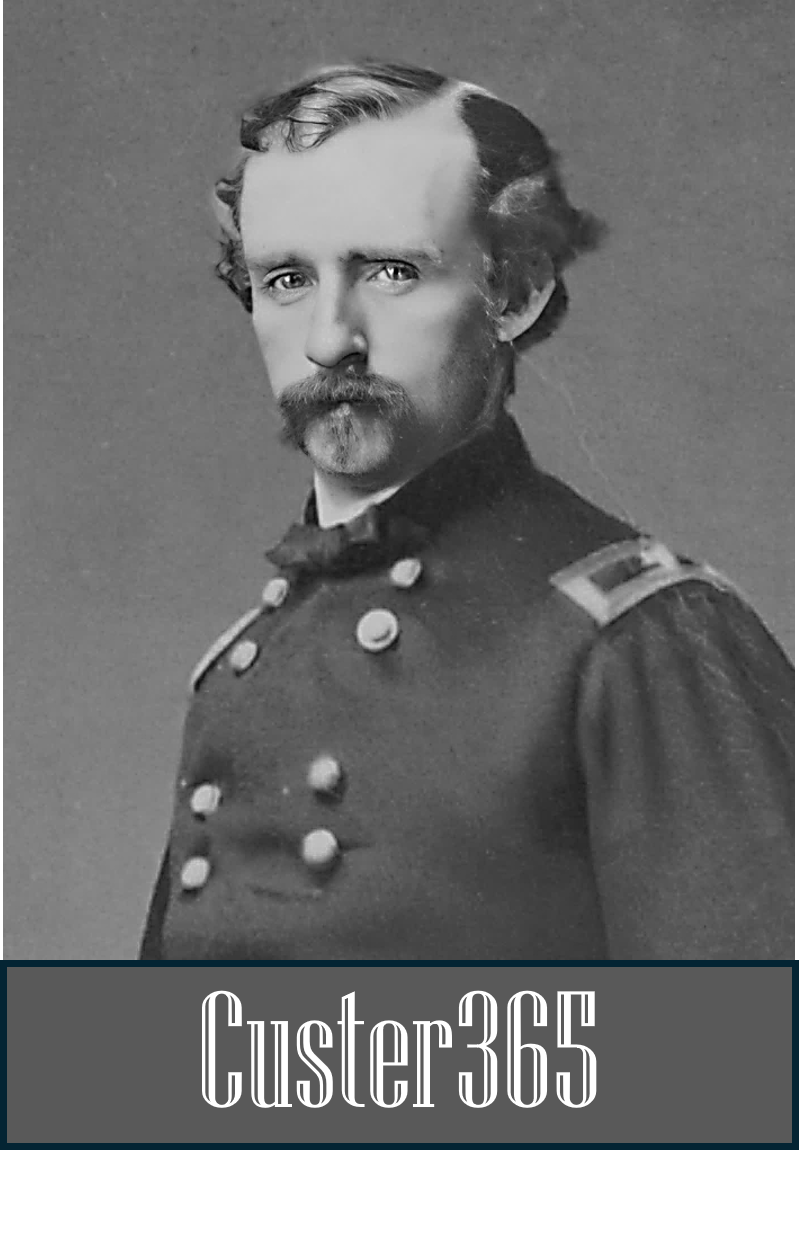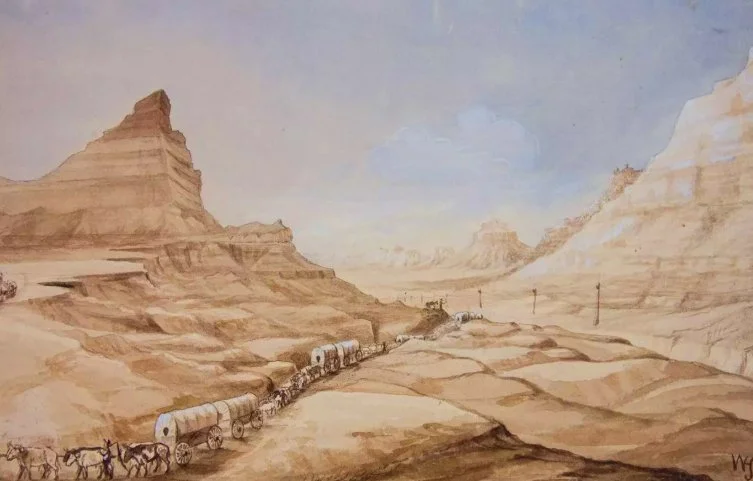AUG 16: Connecting America
On Aug. 16, 1861, crews from the Overland Telegraph Company and Pacific Telegraph Company were working feverishly throughout the West to dig holes, install poles and string wire for the nation’s first transcontinental telegraph line.
Telegraph lines can be scene in the distance in this 1866 painting of Mitchell Pass in Nebraska by artist William Henry Jackson. (Credit: National Park Service)
The eastern section of line was being built westward from Omaha by the Pacific Telegraph Company and had reached Fort Laramie, Wyoming, on August 5. The western section was started in Carson City, Nevada by the Overland Telegraph Company, which had the challenge of dealing with more difficult terrain as they built eastward.
The goal of each company was to be the first to reach Salt Lake City in Utah Territory and connect the lines there.
The telegraph, invented by Samuel Morse in the 1830s, was a major advancement in the speed of communications. Before its invention, it took 45 days to send a message from New York to San Francisco by ship, and over 20 days to send a message by overland stagecoach from St. Louis to San Francisco. The famous Pony Express took 11 days from St. Joseph, Missouri to Sacramento, California.
The military saw advantages in using the telegraph to communicate more effectively with outposts scattered across the Plains and the West.
While it made sense to build a transcontinental telegraph line, no private companies had the appetite to spend that much of their own money to do so.
According to the National Park Service, on June 16, 1860, President James Buchanan signed “An Act to Facilitate Communication between the Atlantic and Pacific States by Electric Telegraph”, also known as the Pacific Telegraph Act. The Act authorized the Secretary of the Treasury to seek proposals for the construction of an electromagnetic telegraph to connect the eastern cities to San Francisco.
The act specified that the United States Government would provide up to $40,000 a year for up to 10 years to fund the construction and maintenance of the telegraph and would authorize the telegraph company to occupy public land along the route.
The Pacific Telegraph Act also required the transcontinental telegraph to include stations for repairs along the route, no more than 15 miles apart on average. While the telegraph could be used to send messages between private citizens, messages sent by the government had priority, and the government had the privilege of connecting military posts by telegraph.
On July 4, 1861, work began. The first workers surveyed and marked the telegraph route, and were followed by workers digging holes, installing poles, and stringing wires. Three to eight miles of telegraph line were installed every day, and a mobile telegraph station was used by crews to send updates on the telegraph’s progress to the city they started from.
Hundreds of oxen were obtained to haul supplies by wagon. Supplies for the western section of the transcontinental telegraph, such as wires and insulators, were manufactured in the eastern U.S., then shipped to California via Cape Horn. Obtaining poles was a major challenge across the treeless expanses of the Great Plains and Great Basin.
On October 24, 1861, the transcontinental telegraph was completed when the Overland Telegraph Company reached Salt Lake City, several days after the Pacific Telegraph Company completed their eastern section.
The first message sent all the way across the continent was sent from Sacramento by Stephen J. Field, Chief Justice of the California Supreme Court, to President Abraham Lincoln in Washington, D.C. Field’s telegram congratulated Lincoln on the completion of the telegraph and pledged that California would stand by the U.S. government during its time of trial. (The Civil War began on April 12, 1861.) Field’s telegram was sent at 7:40 p.m. on October 24 and was received by President Lincoln at 11:30 the following morning.
The new telegraph wires strung from tall wooden poles must have appeared as a strange site to many native tribes living nearby.
According to Captain Eugene F. Ware in his account titled The Indian War of 1864, "It may be thought strange that the Indians did not secretly destroy the telegraph line. There were a number of strange stories connected with it, and with Indian experience.”
Ware wrote that “in order to give the Indians a profound respect for the wire,” chiefs had formerly been called in and told a story about the electro-magnetism that propelled dots-and-dashes along “singing wires” in such a way “as to produce the most stupendous dread. No effort was made to explain it to the Indians upon any scientific principle, but it was given the appearance of a black and diabolical art. The Indians were given some electric shocks; and every conceivable plan, to make them afraid of the wire, was indulged in by the officers and employés of the company.”
It was through these efforts, along with the Indians’ personal experiences with accidental electrical shock and the tendency of the iron telegraph wire to attract lightning, that kept Native Americans from attacking the telegraph in the early years.


